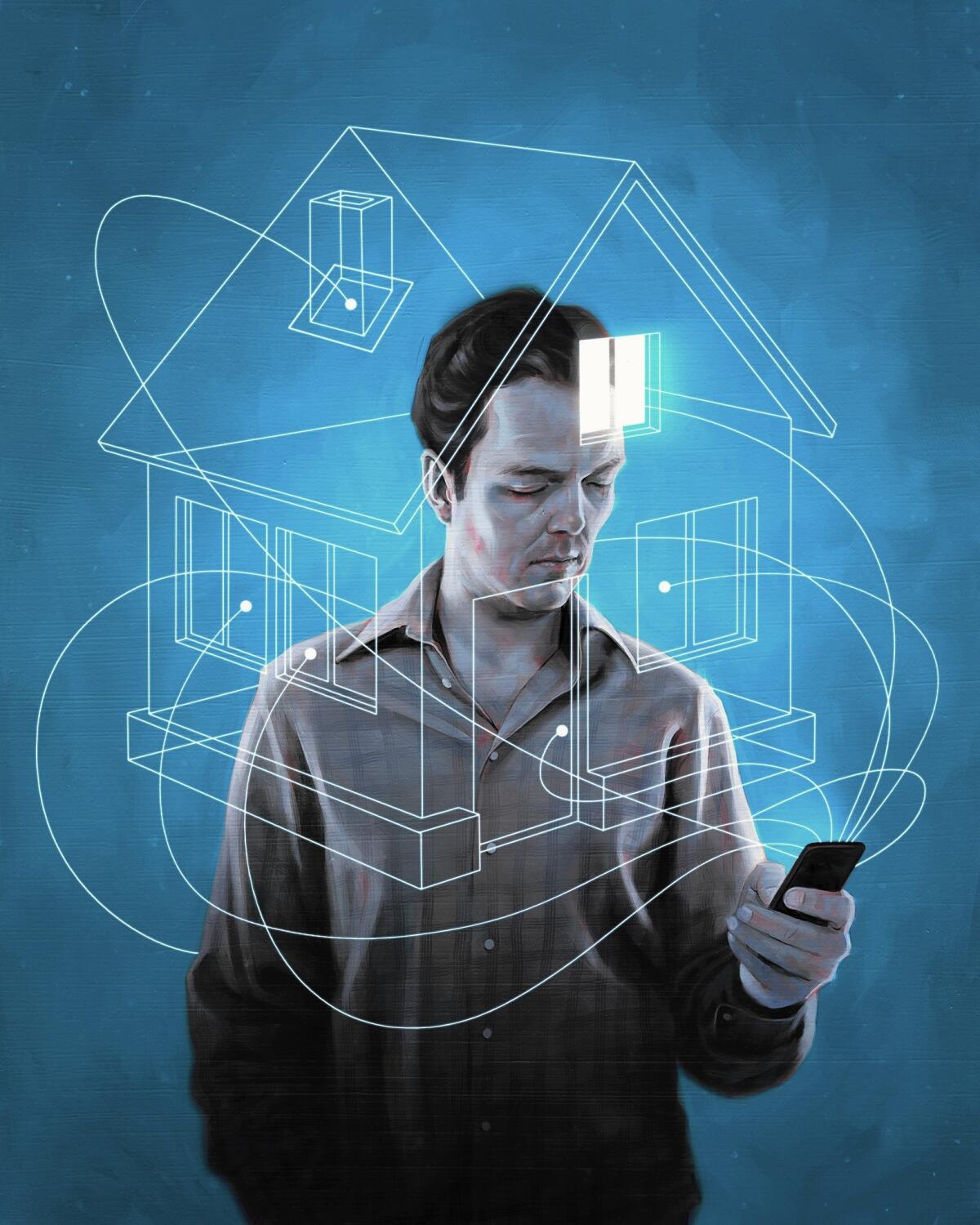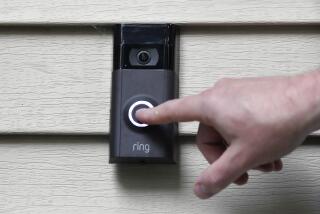CES 2015: Electronics show to include cheaper 3-D printers, ultra-HD TVs

- Share via
This year’s International Consumer Electronics Show focuses less on the new and more on the improved.
The advancements include better integrated and more fashionable wearable devices; cheaper 3-D printers and ultra-high-definition televisions; upgraded phablets (phone-tablet hybrids); new uses for virtual reality; and self-driving cars that will seamlessly connect with your smartphone.
Every January, tens of thousands of attendees descend upon Las Vegas for the annual trade show, one of the world’s largest technology events, known as a premier showcase for innovative products.
This year’s event officially runs Jan. 6-9, with media previews beginning Sunday. With an estimated 150,000 attendees and 3,500 exhibitors, plenty of stories and hype will emerge from CES.
Here are some of the big trends to watch.
More connected things
The so-called Internet of things — tech industry jargon for just about any object connected to the Web — is the buzzword of the moment as tech developers scramble to connect nearly every household and lifestyle item.
Toys, sports equipment, smoke alarms, light bulbs, appliances — even pacifiers and earplugs — are among the newly connected things on display at CES.
“The Internet of things is coalescing, and it’s really happening around devices in both traditional and nontraditional high-tech industries,” said John Curran, managing director for Accenture’s communications, media and technology group and a longtime CES attendee. “This year we expect to see that go even further.”
CES organizers say this year’s show will feature the largest-ever showcase of products, services and technologies that make up the Internet of things, with more than 900 exhibitors planning to share such innovations.
It has become such a hot topic that Boo-Keun Yoon, chief executive of Samsung Electronics Co., is slated to devote much of his Monday keynote address to connected devices and smart homes.
It will be years, if ever, before the Internet of things begins to operate in a seamless way. Some critics believe that people already have too many gadgets, and more connected things will add to the overload.
Wearables go high fashion
Wearables was last year’s buzzword, but the buzz hasn’t disappeared.
Wearables include items such as fitness trackers and watches that count how many steps you’ve taken. As the devices become more mainstream, developers know wearables have to be as fashionable as they are functional, and many companies have taken steps to make them more attractive.
Apple Inc., which will not be exhibiting at CES, helped kick off that trend when it introduced the Apple Watch in September; the device has been touted as not just a high-tech watch but also one that trendy consumers feel comfortable wearing with a sharp business suit or out for a night on the town. It’s expected to begin selling soon.
Security, front and center
The drive to connect everything has consumers worried about devices collecting and storing growing amounts of sensitive personal information.
In the wake of the Sony Pictures hack and other high-profile security breaches, such as the release of celebrities’ nude photos, security experts say consumers demand greater safety and security.
“Companies across all of CES are taking that very seriously,” Curran said.
Paul Madsen, an executive at Ping Identity Corp., said that passwords are no longer enough, and that companies at CES will be capitalizing on this with new devices used for authentication.
“Where we’re headed is a much more passive and seamless authentication model where the explicit log-in becomes less common,” he said.
3-D printers: Smaller, better
CES doubled the amount of space for 3-D printing technology this year. More than 30 3-D printing companies will cover more than 14,000 square feet of exhibit space.
According to a recent report by the Consumer Electronics Assn., which puts on CES, sales of desktop 3-D printers are projected to reach 67,000 units in 2014, netting $76 million in revenue, an increase of 43% over 2013.
“3-D printers are moving toward more compact units that are more suitable for consumers and capable of printing a variety of consumer goods, from toys and electronics to clothing, shoes and even food,” said Karen Chupka, senior vice president of International CES.
She foresees 3-D printers as a “major disrupter in the global economy.”
Artyom Yukhin, CEO of 3-D scanning company Artec Group, says the technology won’t gain mass appeal in 2015 but predicts consumers will be hearing a lot more about it and will become more comfortable with the idea. Artec plans to get more of its Shapify Booths into department stores where families can print 3-D models of themselves.
Screens: Bigger, sharper on smartphones and TVs
Ultra-high-definition television screens, known as 4K, have garnered a lot of attention in the last couple of years. But 4K hasn’t gotten off the ground because of high prices and the lack of 4K content from entertainment studios. A Samsung 50-inch 4K TV will cost you $1,000 to $1,800 at Best Buy, for example.
That’s slowly beginning to change. New models on display at CES will be larger and more wallet-friendly.
Smartphone screens keep getting bigger too. Apple, as usual, won’t be at CES in an official capacity (the tech company is known to send fleets of employees to scope out the show in secret) but the popularity of the company’s 5.5-inch iPhone 6 Plus will loom large.
Extra-large smartphones, dubbed phablets, will be on display from Samsung and other big brands as well as smaller Chinese manufacturers. The jumbo screens are a hit with mobile users who say they’re great for watching videos and reading. But bigger phones have cut into the market share of traditional tablets, so exhibitors are sure to tout new tablet features that they hope will set the category apart from big phones.
Virtual reality: Not just for games
Virtual reality had a big year in 2014. By acquiring virtual reality headset maker Oculus VR for about $2 billion, Facebook Inc. drew more public attention to the technology.
Technologists working in the VR industry don’t expect 2015 to bring about significant leaps in VR headsets, but they do expect growth in different use cases.
No great leaps in hardware technology are expected at CES, but more ways to use VR will be introduced.
VR is still mostly about games. But at CES, a number of companies are expected to demonstrate software that enables consumers to use VR for non-gaming purposes.
AltspaceVR will show off software that enables users to host movie viewing parties, work meetings and conferences, all in the virtual world.
Other exhibitors will demonstrate ways to meld virtual reality with movie and TV content.
Car connections
This year’s CES will also bring more automakers and their suppliers, eager to talk about the future of both mobility and efficiency.
The head of Mercedes-Benz, Dieter Zetsche, will be one of the keynote speakers at the event. He’s expected to discuss self-driving cars and their potential effect on society as his company rolls out a self-driving concept car for a world debut. The unnamed model disregards current regulatory hurdles for autonomous cars; it’s a vision of what a Mercedes might look like in a decade or so.
Audi, for its part, is aiming at the near future. The automaker’s prototype A7 autonomous car will drive itself from San Francisco to the event to highlight what the industry can do now. BMW will show off a version of its tidy i3 electric car that can autonomously park itself in a parking garage.
Ford Motor Co. will continue its significant presence at CES. This year, recently appointed CEO Mark Fields will be another keynote speaker and is expected to lay out Ford’s strategy for mobility on a global scale, especially in dense urban areas.
Toyota Motor Corp., meanwhile, promises significant news in the world of hydrogen fuel-cell vehicles.
Twitter: @byandreachang
Twitter: @traceylien
Times staff writer David Undercoffler contributed to this report.
More to Read
Inside the business of entertainment
The Wide Shot brings you news, analysis and insights on everything from streaming wars to production — and what it all means for the future.
You may occasionally receive promotional content from the Los Angeles Times.












